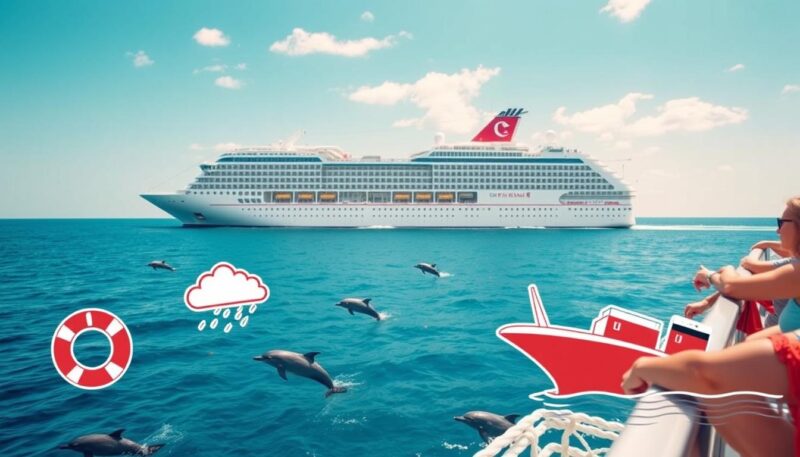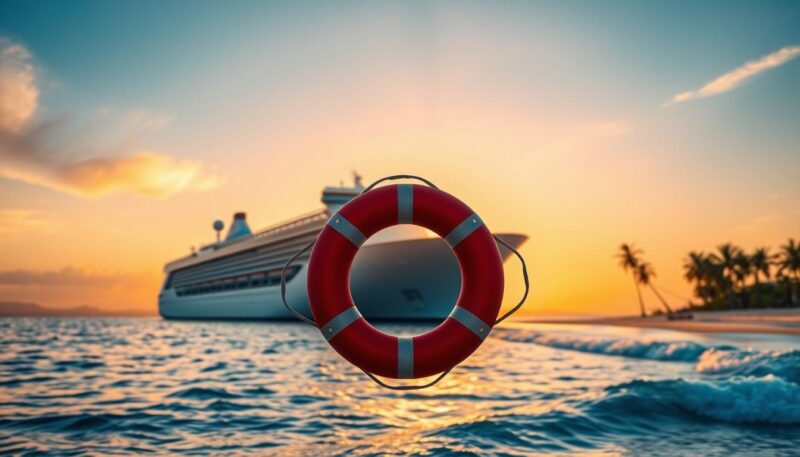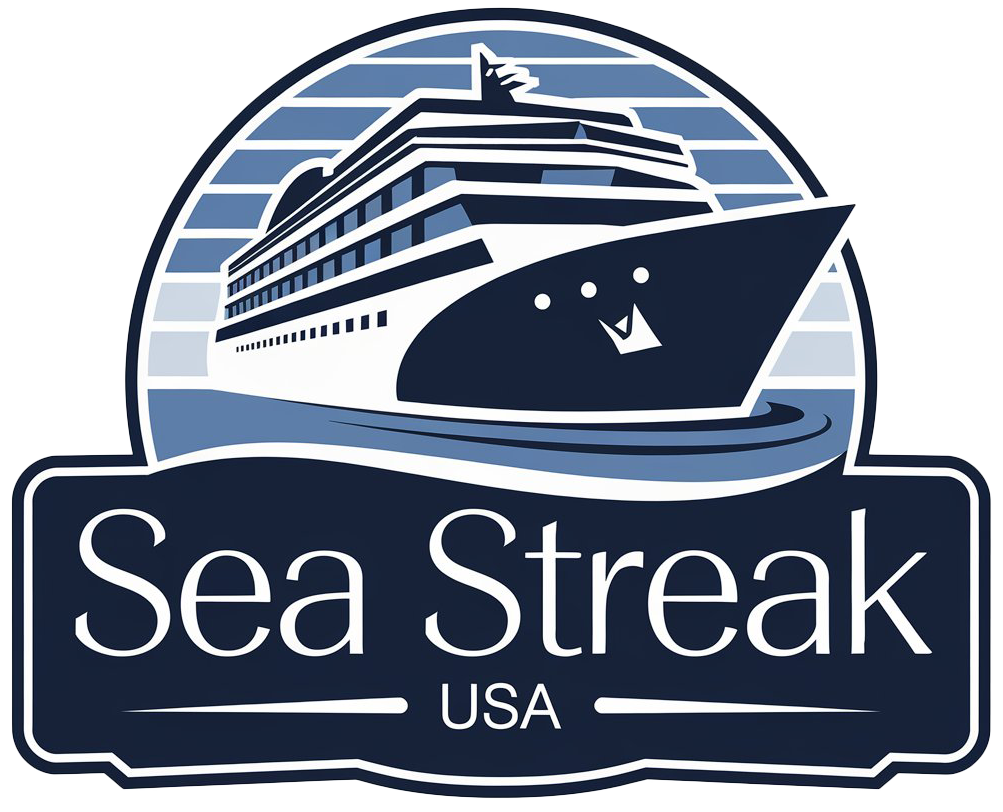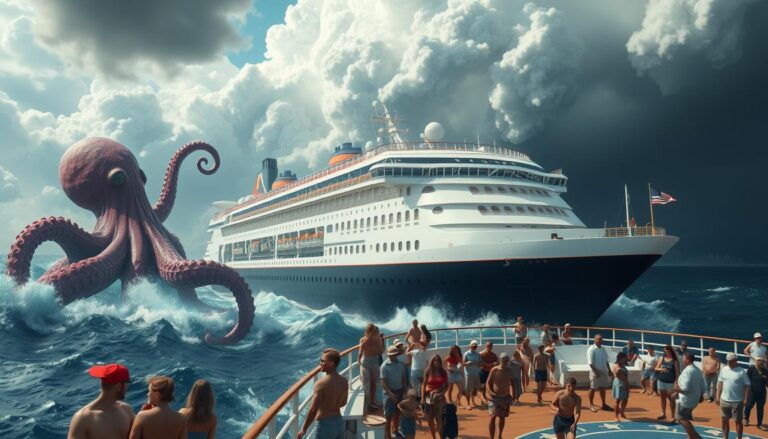If you’re contemplating a cruise for your next vacation, the excitement of visiting breathtaking destinations often comes bundled with nagging questions—most notably, are cruises safe? While many perceive cruise vacations as idyllic experiences, the fear that arises from cruise safety myths can pose barriers to enjoying this incredible mode of travel. It is common for seasonal cruisers and rookies alike to express doubts about various aspects of cruise safety, but these doubts often stem from miscommunication and misunderstandings that have become deeply ingrained in public perception.
Many first-hand accounts arise from friends and family who influence your perception of cruising. These anecdotes can amplify concerns, causing you to second-guess your decision to embark on a floating getaway. Our goal here is to shine a light on the truths surrounding cruise safety and dismantle the misconceptions about cruise safety that might have you hesitating. By exploring the facts, you will be empowered to move past these myths and fully embrace the adventure that awaits you on the high seas.
Understanding Cruise Safety Regulations
The safety of passengers and crew on cruise ships hinges on stringent regulations and practices. Compliance with international safety standards plays a critical role in maintaining the integrity of the cruise industry. Various governing bodies enforce regulations to ensure that cruise lines follow robust safety measures addressing potential risks.
Compliance with International Safety Standards
Cruise lines must adhere to a comprehensive set of safety standards mandated by international agreements. These regulations encompass a range of factors, including sanitation, health protocols, and emergency procedures. The Vessel Sanitation Program by the U.S. Centers for Disease Control and Prevention mandates that cruise ships carrying over 13 individuals undergo random inspections. Ships are scored on a 100-point scale, with any score below 86 indicating a failure to meet compliance standards.
The Role of SOLAS in Cruise Safety
The Safety of Life at Sea (SOLAS) convention is a pivotal framework in maritime safety. Established following the Titanic disaster, SOLAS set forth stringent mandates, including a requirement for all cruise ships to have lifeboats accommodating every passenger. This regulation exemplifies the industry’s commitment to passenger safety and sets the foundation for ongoing improvements in safety practices.
Impact of Historical Incidents on Regulations
Historical incidents have significantly influenced the evolution of cruise safety regulations. For instance, the spread of norovirus on cruises raised concerns about health safety, leading to enhanced sanitation protocols. The experience of past health threats prompted cruise lines to adopt strict health measures, such as vaccination requirements and improved medical facilities onboard. Such vigilance ensures compliance with international safety standards and prioritizes guest well-being.
| Regulation Area | Description |
|---|---|
| Health Inspections | Cruise ships undergo inspections to meet sanitation standards via the CDC’s Vessel Sanitation Program. |
| SOLAS Compliance | Requires adequate lifeboats for all passengers, ensuring evacuation safety. |
| Emergency Drills | Mandatory safety drills familiarize guests and crew with emergency protocols at the beginning of each cruise. |
| Health Protocols | Enhanced sanitation, social distancing, and vaccination policies implemented to combat disease spread. |
Debunking Common Cruise Safety Myths
Cruising often comes with its fair share of myths that can deter potential travelers. Addressing these cruise safety myths is essential to ensure understanding and appreciation of the safety measures in place on modern cruise ships. Let’s explore some of the most common myths and the realities that contradict them.
Myth 1: Cruises Are Unsafe
Many people believe that cruises pose dangers that other forms of transportation do not. In reality, cruise ships are among the safest means of travel available today. Regular inspections by the U.S. Coast Guard, comprehensive crew training, and the fact that lifeboat capacity exceeds passenger numbers all contribute to a secure voyage. Years of experience among captains and crew further ensure your safety while on board.
Myth 2: You Will Get Seasick
Seasickness often deters people from booking cruises. Surprisingly, modern ships are designed with stabilizers that minimize significant rolling and pitching, making seasickness very unlikely. Many remedies are available, including patches and natural options like ginger and mint. Choosing a midship cabin can also help you avoid discomfort, as motion is most felt at the ship’s edges.
Myth 3: Cruises Are Overcrowded
The concern about overcrowding is common among potential cruisers. Not all cruising experiences are the same. Boutique cruise lines, such as Windstar, feature smaller ships with capacities ranging from 148 to 310 guests. These intimate settings allow for a more personal experience and avoid the overwhelming crowds associated with larger vessels. Spacious decks and thoughtfully designed venues ensure comfort for all aboard.
Myth 4: You’ll Be Bored on Board
People often think that cruising offers limited entertainment. This is far from the truth. Passengers can engage in numerous activities that make for a vibrant experience. Live music, culinary demonstrations, shore excursions, and water sports provide endless options for engagement. With opportunities to learn and immerse yourself in the culture of various destinations, your cruise will undoubtedly be filled with excitement.

| Myth | Reality |
|---|---|
| Cruises Are Unsafe | Among the safest transportation methods, with strict safety regulations. |
| You Will Get Seasick | Stabilizers on most ships greatly reduce the chances of seasickness. |
| Cruises Are Overcrowded | Boutique cruises like Windstar offer a more intimate experience. |
| You’ll Be Bored on Board | Numerous activities and entertainment options keep passengers engaged. |
How to Stay Safe on a Cruise
Embracing the adventure of cruising can be thrilling when you prioritize your safety. The following cruise safety tips will help ensure your journey is enjoyable without compromising security. Applying best practices for personal safety, understanding crucial tips as a first-time cruiser, and utilizing the ship’s safety features can significantly enhance your experience.
Best Practices for Personal Safety
Maintaining personal safety during a cruise involves a few simple but effective practices. Consider the following:
- Secure your valuables. Since 95% of reported thefts on cruise ships occur when items are left unsecured in cabins, always lock up important belongings.
- Stay aware of your surroundings. This vigilance fosters a safe environment, especially in crowded areas where exposure to infectious diseases and physical injuries increases.
- Participate in safety briefings. These sessions provide valuable information on emergency procedures, ship layouts, and evacuation routes.
Cruise Safety Tips for First-Time Cruisers
Joining your first cruise can be overwhelming. Keep these essential safety tips in mind to help you stay safe on a cruise:
- Familiarize yourself with the ship’s layout, including exits and emergency equipment. This understanding helps you react calmly in stressful situations.
- Recognize emergency protocols and the location of safety equipment, such as life jackets.
- Plan for weather conditions by packing appropriate clothing and ensuring any essential documents or medications are packed, as 80% of cruise passengers forget crucial items.
Utilizing Ship Safety Features and Crew Training
Modern cruise ships are equipped with safety features designed with your protection in mind. Consider these aspects:
- All cruise lines adhere to SOLAS regulations, ensuring ships are equipped with adequate lifeboat capacities and safety equipment.
- Regular crew training ensures that staff can efficiently handle emergencies and assist passengers in case of various scenarios.
- Public areas are monitored by camera equipment, increasing security throughout the ship.
By engaging with these precautions and strategies, you can significantly mitigate risks, thus enjoying the pleasures of cruising while knowing how to stay safe on a cruise.

Conclusion
As you prepare for your next adventure on the high seas, it’s essential to recognize that many of the misconceptions about cruise safety stem from outdated beliefs. With nearly 1 in 6.25 million odds of an incident occurring, cruising remains one of the safest vacation options available today. By understanding the rigorous safety protocols in place, including over 60 inspections and advanced firefighting systems on each ship, you can confidently embark on your journey.
The history of regulations like the Safety of Life at Sea (SOLAS) treaty showcases how the industry evolves to prioritize passenger safety. Recent improvements, such as mandatory safety briefings before departure and enhanced health measures, reinforce the fact that cruising is not only a thrilling experience but a safe one, especially when all crew and passengers adhere to vaccination protocols. Empowered by knowledge, you can combat the misconceptions about cruise safety and embrace the unique experiences that await you.
Ultimately, cruising offers an unparalleled opportunity to explore new destinations in comfort and safety. By familiarizing yourself with the necessary precautions and trusting in the expertise of industry leaders, you can set sail with peace of mind, knowing that a world of wonder awaits just beyond the horizon.

